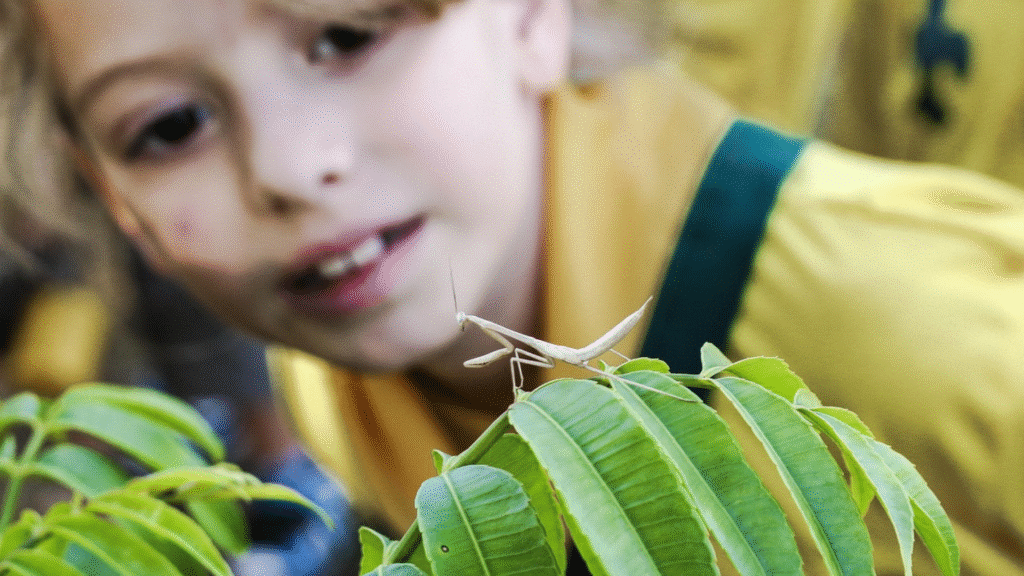It’s summer vacation, and while children may be delighted with all the free time on their hands, parents sometimes find it challenging to keep their kids meaningfully engaged during the extended time away from school. Perhaps, like many families, you have enrolled your child in summer camp, music lessons, swim team, or Little League. This likely means a lot of driving to and fro (or carpools to arrange) and a hectic schedule to keep up. This could be especially difficult if, like many parents, you are maintaining your own work schedule during your children’s vacation. If your children are not enrolled in lessons, camps, or other activities, they may begin complaining after that first week or so of freedom that “there’s nothing to do.”
How can parents navigate the swings between too much or too little to do, the need for adequate supervision, the extra expenses often incurred, and, most importantly, the task of keeping children meaningfully occupied, and not just busy? Some teachers and parents give summer homework—reading a given number of books, for example, keeping a summer journal, or completing pages from a workbook to keep skills sharp. While valuable in their own right, these activities only go so far in sustaining children’s motivation and interest, in that they engage the head, but not the hands and body.
In this post, we offer ideas to help parents and children enjoy summer vacation through hands-on activities in the outdoors. Some of the suggestions require the support and/or supervision of an adult—time well spent together from which everyone can benefit—and others can be done by children independently as long as they have the necessary materials or resources. Most involve very little cost, if at all.
Alternatives to Summer Homework: Getting Outdoors
In a 2020 webinar, “Helping Children Feel at Home in the Natural World – The Montessori Approach,” Gerard Leonard proposes a list of activities that not only get children out of doors and involved in the natural world, but also teach a variety of practical life skills. In today’s world of hectic schedules, carpools, and often too much screen time, these suggestions bear revisiting.
Help your child to learn about, experience, and appreciate the outdoor world by encouraging or teaching them to:
- hike in the woods or up hills and mountains
- pitch a tent
- build a campfire
- search for invertebrates
- build a fort or a lean-to in the woods
- make a little dam
- identify some constellations
- keep a nature journal
- pick fresh berries and bake a pie
- go for a night hike with a flashlight
- plant and care for their own garden
- learn the cardinal directions in relation to their house
- watch a meteor shower
- learn to whittle
- try to catch a frog
- try to catch fireflies in a jar
- build a birdhouse
- identify birds by their songs
- identify birds through binoculars
To expand on some of the ideas above, children can also:
- create and maintain a composting system (keep a record of the invertebrates living there)
- participate in an insect census as part of a Citizen Scientist project
- learn the names of the plants in their yard and neighborhood, and the birds, insects, and other animals that are connected to those plants
- press flowers and leaves and use for crafts or arrange into a notebook (add labels and descriptions if desired)
- build skills by leading hands-on projects through participation in 4-H
Most of the activities listed above not only require going out of doors, but necessitate movement and the practice of gross and small motor skills. They call for creativity, innovation, and problem solving. Some involve measurement skills and learning new safety procedures. Others teach responsibility. And perhaps most importantly, they all involve use of the senses—in brand new ways for some children—and observation of the natural world.
Observing the Natural World
Observation of natural phenomena—plant cycles, animal behavior, weather, changing light, the movement of water—helps to foster wonder in children, arousing curiosity and inquisitiveness about the natural world. This often leads to questions that begin the investigative process—the first step of the scientific method. Parents can encourage such activity through role modeling and sharing their own observations and questions. You or your child might wonder, for example:
- How long between flowers and fruit on our apple tree?
- Why do the size and shape of shadows change throughout the day?
- What is that bird communicating when it suddenly changes its song?
- Why does that bee visit this flower but not that one?
- How does that prism on the windowsill create a rainbow on the opposite wall?
Consider partnering with your child by keeping your own journal—make notes, record your questions, make sketches. Try writing haiku or other poetry describing your observations and insights. To facilitate these ideas, put together a kit of sorts—for yourself, your child, or both—including a sketchpad, a hand lens, a pencil, and colored pencils. Encourage your child to keep their kit at hand whenever they are outside; show them how to use a hand lens to get a closer look at an insect, or how to make a quick sketch of a newly opened blossom.

Health Benefits
It is sometimes too convenient for parents to rely on the easy accessibility of screens to keep their kids occupied, and many children and teens often prefer to stay indoors and plugged in, running the risk of adverse health effects, including:
- obesity
- irregular sleep
- behavioral problems
- impaired academic performance
- violence
- less time for play
- tech or text neck
Outdoor activities provide a healthy counterweight to these dangers. It has been well established that spending time in natural spaces is associated with numerous health benefits, such as better management of stress, “which could mean a lower risk for chronic disease, illness and mortality.” Furthermore, when we get our children to spend more time outdoors, we are:
- building their confidence
- promoting creativity and imagination
- teaching them responsibility
- providing stimulation of the senses
- getting them moving
- helping them to think and ask questions about the natural world
- reducing their stress and fatigue
So let’s make summer activities about dexterity and creativity; mobility and wonderment; learning north from south and Orion from Pegasus; and using the senses to observe, discriminate, and appreciate. Most importantly, let’s make summer about having fun, about good physical and cognitive health, and about picking up some practical life skills along the way.


